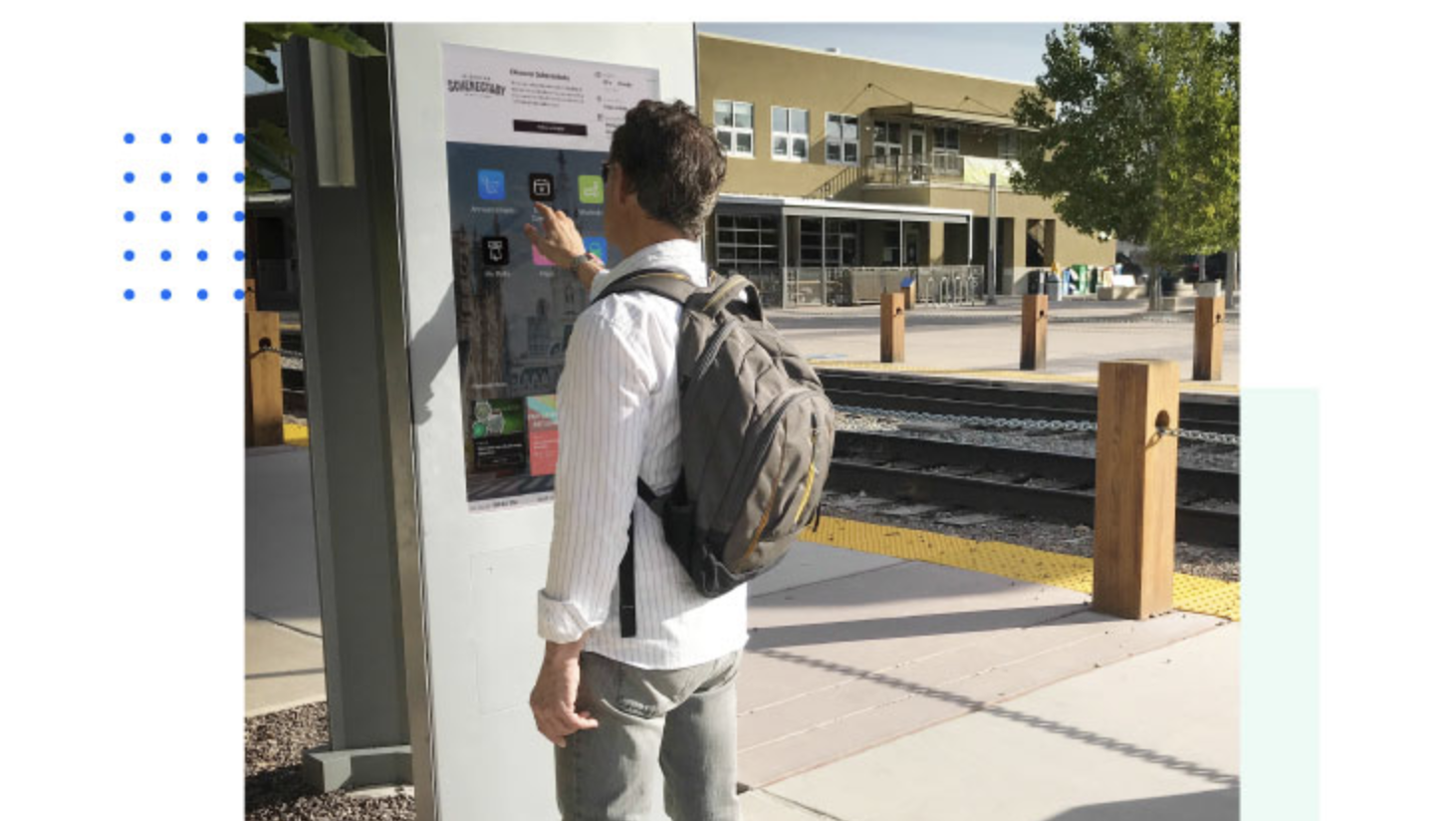Taking the Space with You
Mobile devices offer a distinct advantage for wayfinding. One excellent example is using QR Codes.
QR codes are easy for visitors to recognize and provide them with information about where to go. When used correctly, they can be a powerful way to help people find their way around your location. By placing QR codes in strategic locations, you can make sure that visitors possess everything they need to get where they’re going with minimal effort on their part.
It is also important to think about the layout of your space when it comes to wayfinding. Are there areas where people tend to get lost or confused? If so, it might be time to rethink the layout of your space and make sure that everything is easy to find. Wayfinding is a big part of what makes an organization run smoothly, but few people take the time to think about how it works. What would happen if we treated wayfinding is more than just something that must be fixed? What if we looked at it as an opportunity to improve the visitor experience when a person visits your location? Using the space in a building effectively can make all the difference in how well wayfinding delivers a great visitor experience.
Wayfinding Apps
We’re also seeing a trend in wayfinding apps. These apps are designed to help people find their way around town and can be a great resource for visitors. They often include maps of the area as well as information about local businesses. If you’re looking for a way to make your event more accessible, a wayfinding app can be a great way to do it.
Digital signage is becoming an increasingly important part of wayfinding. By using digital signage that is easy to update, you can keep your visitors engaged with fresh content. Additionally, it’s a great way to show how you are innovative. By posting information about your company or event, it shows others that you care enough to offer the most up-to-date news. It also allows users to receive personalized information which can help them have a better experience with your location or event.
“The “Indoor Explorer” app, developed by the American Printing House for the Blind (APH), based in Louisville, presents a groundbreaking opportunity that advances access to the arts for those who are blind or have low vision.”
With more on the way – “GoodMaps makes acquisition, launches outdoor capabilities.”
AR and VR
Augmented Reality
Augmented Reality is another trend that we’re seeing in wayfinding. This technology allows you to overlay digital information on top of the physical world. This can be a great way to provide visitors with additional information about your location or event. Augmented reality wayfinding has the potential to revolutionize indoor navigation. It superimposes digital information onto a real-world setting in real time, making it easy and fun for anyone from tourists trying to find their way around new places like airports or shopping centers all of us who need help navigating through complicated buildings such as hospitals.
Virtual Reality
Virtual Reality is also becoming more popular in wayfinding. This technology allows you to create a virtual environment that visitors can explore. This can be a great way to give people a taste of what your location or event is like. Virtual reality can also be used to provide additional information about your location or event. By using virtual reality, you can create an immersive experience that visitors will never forget.
Digital Signage and Interactive Kiosks
Interactive Digital signage is becoming an increasingly important part of wayfinding. By using digital signage software that is easy to update, you can keep your visitors engaged with fresh content. Additionally, it’s a great way to show how you are innovative. By posting information about your company or event, it shows others that you care enough to offer the most up-to-date news. It also allows users to receive personalized information which can help them have a better experience with your location or event.
We’re seeing this trend in airports, malls, and other large public spaces. These signs are often used to provide information about the location or event that is taking place. They can also be used to provide directions to visitors.
“At London’s Heathrow Airport, for instance, digital signage is used as a wayfinding tool in addition to the traditional static signs. The airport has nearly 100 interactive screens placed throughout its terminals that display real-time flight information and gate changes.”
The greatest part about this is that these digital signage features can be customized. You can update the signage visuals to go along with the season, the type of event you are promoting, a major sporting experience that might need some team logos to help enhance the experience, and more. This can be a great way to make a lasting impression on visitors.
Conclusion
As we move into 2022, it’s important to pay attention to the latest wayfinding trends. Augmented reality, virtual reality, and digital signage are all becoming increasingly important in this industry. By using these technologies, you can create a better experience for your visitors. Whether you’re an airport, mall, or other large public space, it’s important to consider ways in which you can provide your visitors with helpful wayfinding tools.
Are you ready to schedule a demo with HootBoard? Let’s get started!
HootBoard provides an easy-to-use, cloud-based platform that helps organizations create and manage interactive digital signage content.
With HootBoard, you can quickly and easily create engaging content that will capture the attention of your audience.
Additionally, HootBoard’s platform makes it easy to track customer engagement and collect customer feedback.
Contact us today to learn more about how HootBoard can help your business to improve customer engagement and satisfaction.





0 Comments